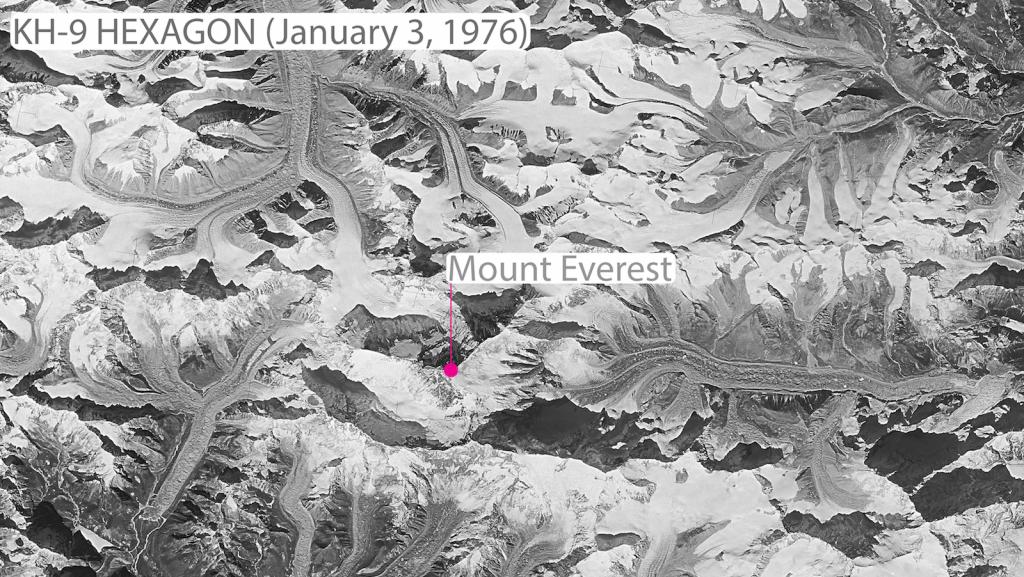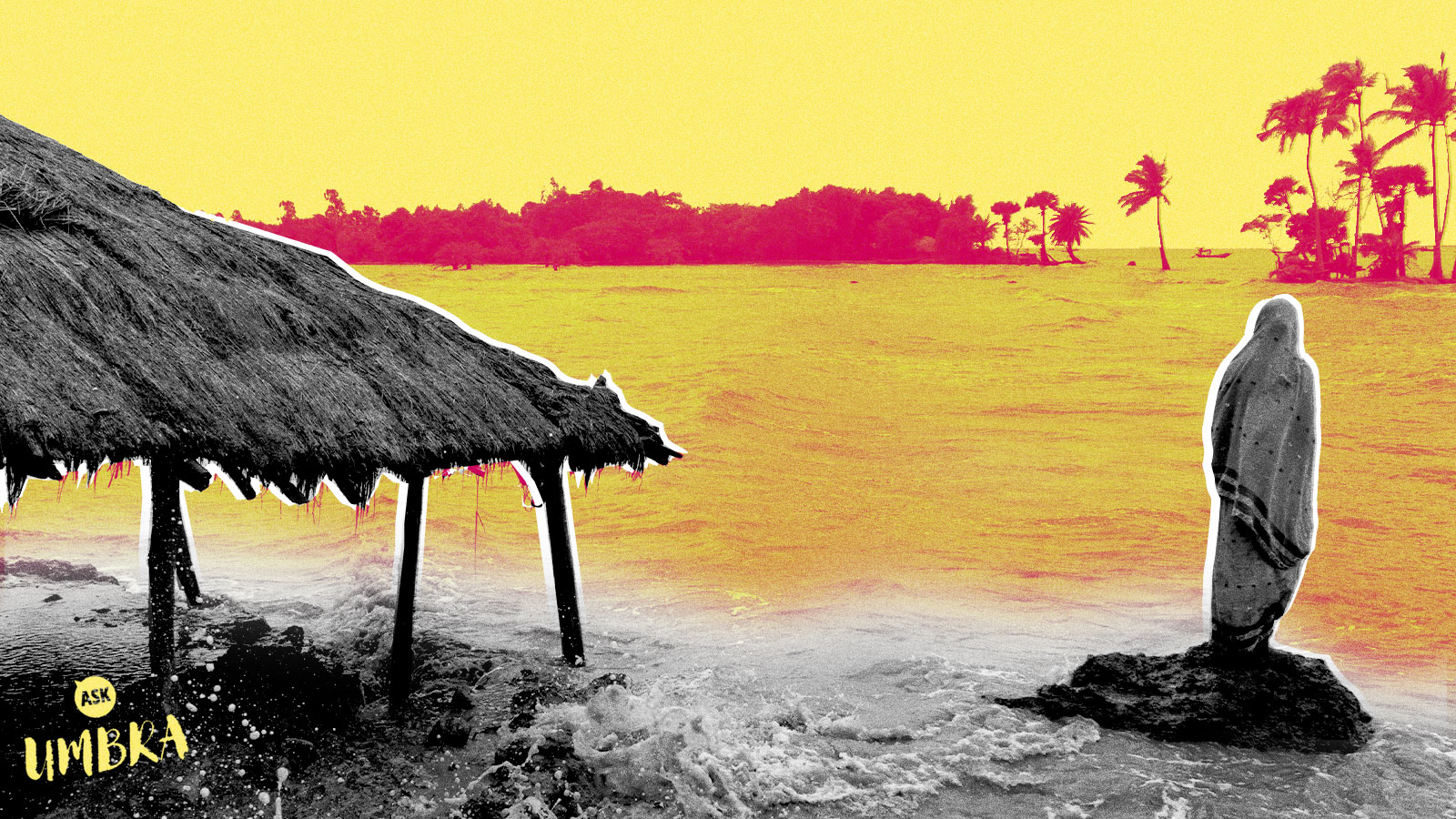Q. Dear Umbra,
How many climate refugees are there?
Worried About Number of Dying Earth’s Refugees
A. Dear WANDER,
You actually raise two important questions here: One, do we know how many people have been forced to relocate due to climate change? And two, what should we be calling them?
Debating semantics may seem useless when we’re talking about the future of our planet and its people. But the words we choose can greatly influence the actions we are inspired to take in response.
There are pros and cons to calling those forced to move due to climate change “refugees.” On the one hand, it certainly communicates the urgency of the climate situation — ecosystems are changing so quickly and so unprecedentedly that many people don’t recognize the places they once called home. (And not in a “this neighborhood’s been taken over by yuppies!” way; in a, “wow, it’s too hot to breathe” way.) The word “refugee” fits the idea of millions of people being forced to leave their homes due to climate change, and that is certainly a convincing argument that we are facing a dire, global emergency.
But then there’s the way that the word “refugee” is used to stir up xenophobia. In fact, all you have to do is turn on cable news to hear some politician or pundit avidly fearmongering about Salvadoran or Syrian or Sudanese refugees pounding at the borders of wealthier (read: whiter) nations. Instead of inspiring people to do something proactive about climate change, like vote, or roll your car into a ditch, the idea of so many people displaced by global warming can be weaponized into a rationale for border walls, military action, or other forms of protectionism.
In other words, we’re at a very, very weird moment in the trajectory of climate change awareness. With many people already suffering from climate consequences and many, many more poised to join them, we must convince those in resource-chugging countries to take action without inflaming their, at times misinformed, sense of self-preservation. The scale of action that must be taken is both overwhelming and overdue, and it requires seeing ourselves as a global community. But it’s an incredibly complicated thing to do, and we must choose our words wisely, as pedantic as that can seem.
Now to the numbers part of your question: The Institute for Economics and Peace, an Australian think tank, recently estimated that in 2017 alone, 18 million people — 61.5 percent of global displacements — were forced to move due to natural disasters. (Those natural disasters are not universally caused by climate change, but global warming is predicted to cause more frequent and intense disasters.) And while projections vary, sources agree that those numbers are going to get a whole lot higher. That same report noted that nearly 1 billion people currently live in areas of “very high” or “high” climate exposure, which could result in millions of people displaced by climate change in the future. A 2018 World Bank report estimated that by 2050, there would be 143 million climate change-driven migrants from the regions of Latin America, sub-Saharan Africa, and southeast Asia alone.
But, if we’re talking about legally designated “climate refugees,” there’s a much different number being thrown around: zero.
That’s because “refugee” has a specific legal definition with certain criteria that need to be met to be able to apply for asylum in a new country, including religious and/or social persecution. And most legal scholars and international lawyers will say that most people who move or are forced to move due to climate disasters are not technically refugees because most of those criteria don’t apply to them.
In 2015, Ioane Teitiota, a man from the Pacific Island nation of Kiribati, applied for asylum as a refugee in New Zealand under the claim that he and his family were endangered by rising seas swallowing their home. The claim was rejected by New Zealand courts on the grounds that it was still possible to live within the nation of Kiribati, regardless of whether his particular home had been rendered uninhabitable.
Now, there is the theory of climate change as a “risk multiplier,” meaning that natural disasters such as droughts or hurricanes can further destabilize already shaky states of peace, triggering wars or other violent conflicts. By that logic, those displaced by climate-driven or -worsened conflicts could qualify legally as refugees.
But some legal advocates worry that waiting for those forced into precarious situations by climate change to technically qualify for refugee status misses the point entirely. “We don’t want to wait until people can qualify as refugees before we act,” said Lauren Nishimura, a human rights attorney and current Ph.D. student at Oxford University. “That’s just silly when we know these things” — referring to climate displacement and climate disasters — “are happening now.”
So, to recap, trying to find the words to describe those impacted by the current climate crisis is fraught, both politically and legally. And according to Nishimura, putting numbers to the problem doesn’t capture the nuances associated with climate-driven movement either.
Climate displacement can be forced by the worst circumstances — think people facing famine, lack of water, conflict, or their homes literally ending up underwater — and many communities worst-impacted by climate change have had the smallest roles in creating the climate problem. But there are also groups who have the means to move before things get really bad, and there’s an argument for those “early decision” migrants, we could call them, actually improving overall climate resilience. And then there are those who see their communities collapse around them, and still don’t have the resources to move at all.
Instead of getting wrapped up in the definition of who can qualify for asylum, Nishimura advocates for climate solutions that focus on human rights: securing livelihoods for those forced to move due to climate change, developing infrastructure to ease the lives of those unable to move, and building capacity in places that will be destinations for climate migrants.
One barrier to building that kind of infrastructure and programming and capacity is cost, of course. That requires tackling the question of who should pay for the plight of the climate-vulnerable. Again, the nations most impacted by climate disasters are usually those least equipped to adapt to it.
Maxine Burkett, professor of law at the University of Hawaii and global fellow at the Wilson Center, used “climate-vulnerable” in a legal article she wrote in 2009 that seeded the idea of climate reparations. (That idea went on to be instrumental in the ‘loss and damages’ component of the Paris Agreement, which concerns the transfer of resources from wealthy countries to developing countries to compensate them for climate harm.) I asked her why she chose that term in particular.
“I don’t see vulnerability as inherent — it’s an external factor that needs to be addressed,” she said over the phone. “Why are people so differentially impacted? What were the root causes of it? And frankly, how do we take this up in our decision-making moving forward?”
Since Burkett wrote that paper in 2009, there’s been very little meaningful action to rectify those inequalities. Meanwhile, the climate crisis has accelerated at an astonishing speed. So that brings us back to this weird, terrible moment of climate reality we’re in: Those in powerful positions have long known about the human impacts of the crisis — they just didn’t do anything about it when it would have been most helpful to act. We’re already playing catch-up. What’s to be done?
I think an absolute basic foundation for trying to wrap your head around the idea of “climate displacement” and “climate refugees,” WANDER, is to understand the history of the climate situation we’re in. Wealthy, industrialized countries produce the lion’s share of the emissions that have led to our current crisis. Less industrialized, poorer nations are now paying the price in the form of climate transformations and resource scarcity. That seems really, really unfair, right? Maybe those wealthy countries have some historical obligation to help those they’ve harmed?
Maybe these aren’t “climate refugees” or “climate migrants” or “climate victims,” but rather people who deserve some justice?
Neighborly,
Umbra



